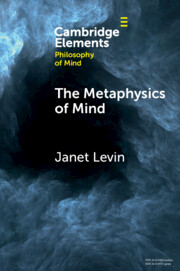Element contents
The Metaphysics of Mind
Published online by Cambridge University Press: 10 February 2022
Summary
- Type
- Element
- Information
- Series: Elements in Philosophy of MindOnline ISBN: 9781108946803Publisher: Cambridge University PressPrint publication: 10 March 2022
References
- 12
- Cited by

